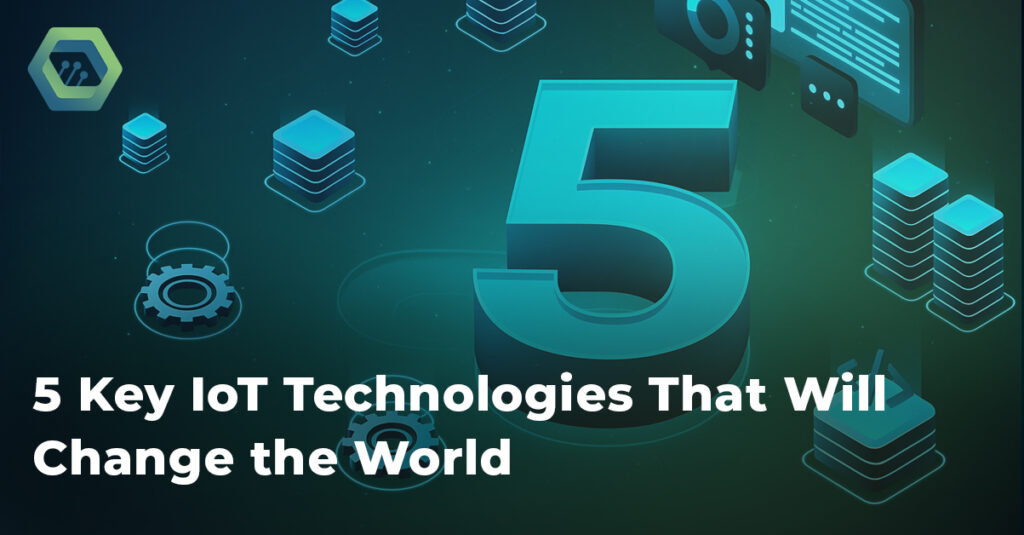The Internet of Things (IoT) has moved from buzzword to business-critical. From smart homes and connected cars to predictive maintenance and energy efficiency, IoT technologies are shaping how we live, work, and interact with the world. As we move further into 2025 and beyond, a new wave of IoT innovations is driving unprecedented change across every sector.
In this blog, we’ll explore 5 key IoT technologies that are poised to transform the world — and why businesses need to pay attention.
1. Edge Computing: Bringing Intelligence Closer to the Source
Traditionally, IoT devices sent data to centralized cloud servers for processing. While cloud computing is powerful, it can’t always deliver real-time responsiveness — especially for critical applications like autonomous vehicles or industrial control systems. This is where edge computing comes in.
Edge computing processes data at or near the device, reducing latency and enabling faster decisions. It also helps lower bandwidth costs and improves data security by keeping sensitive information local. Industries like manufacturing, energy, and healthcare are adopting edge computing to unlock faster insights and reduce dependency on internet connectivity.
Key Benefits:
- Real-time decision making
- Reduced latency
- Improved data privacy
- Cost efficiency on data transmission
2. Low Power Wide Area Networks (LPWANs): Powering Remote IoT
LPWANs are wireless networks designed for long-range communication with minimal power consumption. These networks, such as LoRaWAN, NB-IoT, and Sigfox, are ideal for IoT devices that need to operate in remote areas or on battery power for years.
From smart agriculture and environmental sensors to asset tracking and utility meters, LPWANs enable connectivity in places where traditional networks fall short. They form the backbone of large-scale, low-cost IoT deployments.
Use Cases:
- Monitoring soil moisture in agriculture
- Tracking wildlife or livestock
- Smart water and gas meters
- Cold chain monitoring for food or pharma
3. Artificial Intelligence (AI) & Machine Learning (ML) for IoT
While IoT gathers vast amounts of data, AI and ML are what make that data useful. When combined with IoT, these technologies turn raw sensor inputs into predictive insights, automated actions, and optimized operations.
For example, AI-powered predictive maintenance can prevent machine failures by analyzing sensor data and forecasting problems before they occur. In retail, IoT cameras combined with AI can study customer behavior to improve layout and staffing.
Industries Benefiting from AI + IoT:
- Manufacturing (predictive maintenance)
- Healthcare (patient monitoring and anomaly detection)
- Logistics (route optimization and demand forecasting)
- Smart cities (traffic, lighting, and energy optimization)
4. Digital Twins: Virtual Models of Real-World Systems
A digital twin is a virtual replica of a physical object, process, or system. Powered by real-time data from IoT sensors, digital twins allow businesses to monitor, test, and optimize assets in a virtual environment.
In industries like aviation, construction, and energy, digital twins help simulate how equipment will perform under stress, forecast downtime, or design more efficient systems before physically building them. This reduces costs and boosts innovation.
Examples:
- Simulating factory floor operations
- Managing smart buildings
- Designing and testing aircraft engines
- Monitoring wind turbines remotely
5. Cybersecurity for IoT: The Rising Shield
With billions of connected devices, IoT security is now more important than ever. Each device is a potential entry point for cyber threats — especially in critical sectors like healthcare, defense, or smart cities.
New IoT security technologies focus on:
- Zero Trust frameworks (never trust, always verify)
- Device authentication and encryption
- AI-driven threat detection
- Firmware over-the-air (FOTA) updates to patch vulnerabilities remotely
Organizations that invest in robust IoT cybersecurity not only protect data and systems but also earn the trust of customers and regulators.
Conclusion: The World Is Changing — Is Your Business Ready?
The Internet of Things isn’t about futuristic dreams anymore. It’s here, and it’s changing how industries operate, how decisions are made, and how we interact with the world around us.
The five key IoT technologies covered — edge computing, LPWANs, AI/ML, digital twins, and IoT security — are unlocking new efficiencies, driving innovation, and helping organizations become more agile and responsive.If you’re ready to explore how these technologies can power your next innovation, OmniWOT is here to help. Our unified IoT platform supports multiple protocols, offers seamless device integration, and gives you the tools to build scalable, future-ready IoT solutions tailored to your industry.


